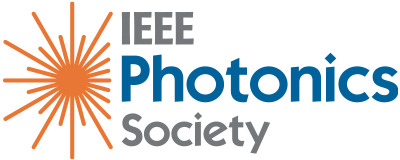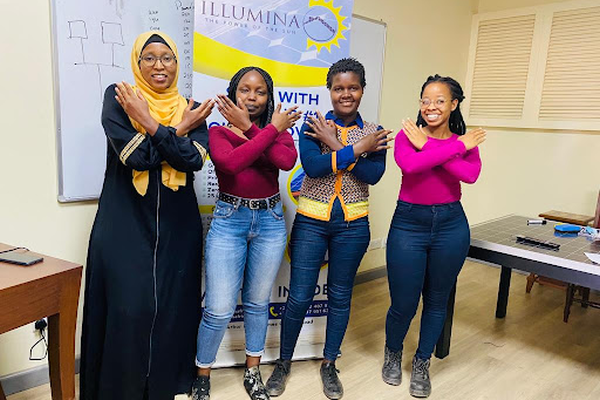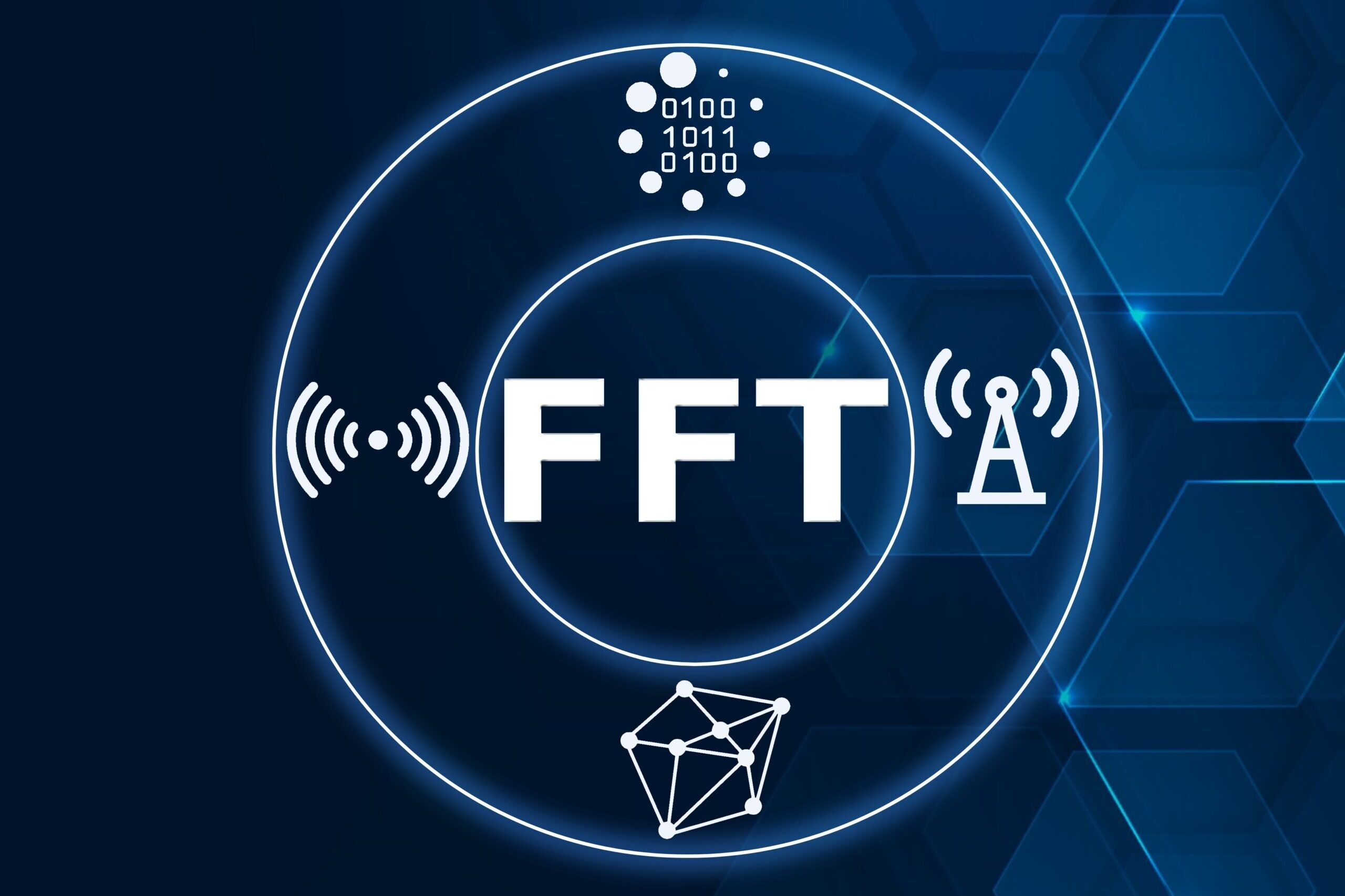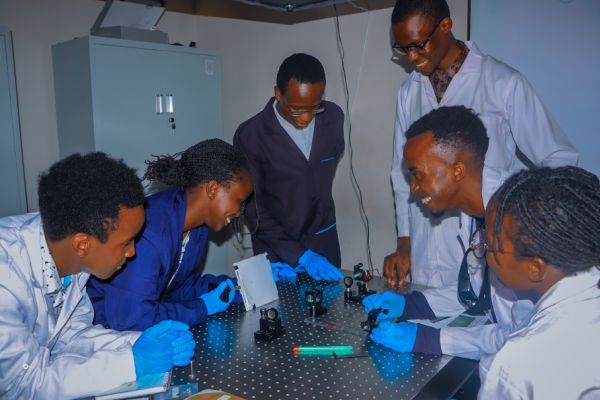Article By: Cliff Mburu; Allan Koech (IPS Global Strategy Rep (Africa), Globalization & YPAC ); Kithinji Muriungi (AVP Chapter Relations, IEEE Photonics Society)

Among the goals of the IEEE Photonics Society (IPS) Kenya Chapter in 2022 was to conduct hands-on physical industry-led pieces of training in core photonics technology application areas like Solar-PV Systems, Fiber Optics, and FTTx, 5G, and Data Centers to its members in partnership with industry leaders in these focused areas.
The training aims to #UpskillMembers, #BuildCapacity in specifically mentioned technologies, and create sustainable IEEE-Industry #partnerships. These pieces of training are sponsored by IEEE Photonics Society Kenya’s annual chapter funding, among other industry collaborations. The chapter also collaborates with other chapters and affinity groups like IEEE Communications Society (ComSoc), IEEE Women in Engineering (WIE), IEEE Power and Energy Society (PES), IEEE Circuits and Systems Society (CASS), Students, and IEEE Young Professionals (YP) in IEEE Kenya Section.

The first training in the series was a hands-on 3-Days intensive Solar-PV Training at Illumina Africa Limited from 11th – 14th March 2022. The training accommodated a total of Nine (9) participants comprising:
- Membership Status: 8 IEEE members and 1 Non-IEEE member;
- Gender: 6 Male and 3 Female;
- Membership Level: 2 Students, 3 Graduates, 2 YPs, 1 Professional Member, and 1 YP Non-IEEE member;
- Partner Societies: 6 IPS, 2 PES, 3 ComSoc, 1 Computer Society, 1 Signal Processing Society, and 2 Robotics & Automation Society; and
Expertise Level: 6 Beginner, 2 Mid-Level, and 1 Expert.
Being in IPS, understanding this technology makes it easy for society members to appreciate the impact of photonics technology in its raw form. There has been a shift toward the consumption of clean energy as part of current global trends to achieve SDGs and specifically counteract global warming. Solar energy is one of them that has grown in popularity. This may be observed in the growing popularity of solar-powered household devices and the expanding business of selling solar products, such as M-Solar (M-Kopa), D-Light, and other similar companies.

The IEEE Photonics Society – Illumina Africa partnership training provided end-to-end delivery of Solar-PV systems practical hands-on training, including understanding the technology, theory, design, project budgeting, implementation, installation, testing, and commissioning. The training involved lectures, team exercises and projects, class demos, site visits, hands-on installations, and testing on solar energy systems.
Day 1: Classroom Lectures and Demos

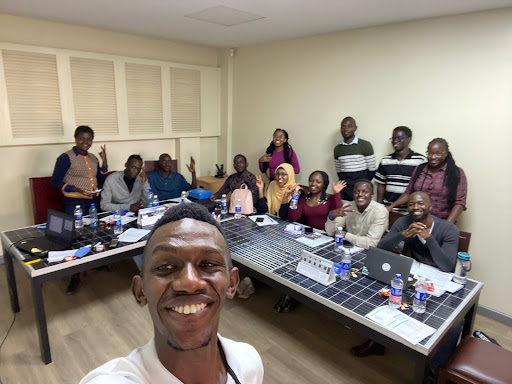

The first day was mainly theoretical; this included introducing solar systems and their components and physically showing some of the equipment used. Trainees went through reading and interpreting solar panel datasheets. In addition, trainees also did load calculations using a theoretical household. This is the heart of everything. Once you’ve determined the load, you can only do the rest of the calculations. After the load calculation, panel sizing was performed. This refers to determining the number of panels required, each with a common and specific wattage. It also entails determining the type of connection between the panels. In summary, the process is as follows.
Determine load
- Calculate the total Watt-hours per day for each appliance used
- Calculate the total Watt-hours per day needed from the PV modules
Size the PV modules
- Calculate the total Watt-peak rating needed for PV modules
- Calculate the number of PV panels for the system

Day 2: Site Visits, Solar Systems Testing
A site visit characterized the second day. They were getting to see the theory put into action. The trainees also used some of the measuring tools to measure temperature, irradiance, current, and voltage. The trainees also got to understand termination at the MPPT. Part of the day also went to inverter sizing.
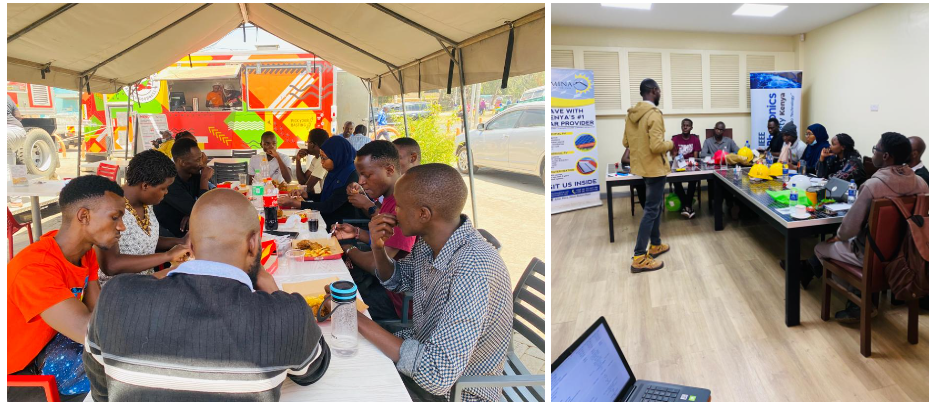
Day 3: Practical Hands-on Solar Installations

The trainees got to design a theoretical system from scratch using the knowledge gained from the two days. Battery sizing was also discussed. Finally, there was a demonstration on how to mount solar panels on different surfaces, such as the ground mount or roof mount.
To find out the size of the battery, the following calculations were made;
- Calculate total Watt-hours per day used by appliances.
- Divide the total Watt-hours per day used by 0.85 for battery loss.
- Divide the answer obtained above by the depth of discharge. Example 50% DOD
- Divide the answer obtained above by the nominal battery voltage.
- Multiply the answer obtained above with days of autonomy to get the required Ampere-hour capacity of the battery.
This can be represented mathematically as:
Battery Capacity (Ah) = (Total Watt-hours per day used by appliances x Days of autonomy) ÷ (0.85 x 0.5 x nominal battery voltage)

After the 3-Days of intensive learning and exposure, all the participants were awarded certificates of participation. Some participants were promised internships due to their excellent performance. Organizers are still in negotiations on how to collaborate and continue upskilling the IEEE members while IEEE provides the company with competent talents.

Trainees Feedback:
“In such a short period, I learned a lot in solar energy, from the basics to having a solid understanding of the various solar PV components and their datasheets, system sizing, array configuration, load and performance estimation, earthing, lightning protection, etc. I have gained crucial industrial and practical knowledge regarding PV System Design and installation.” – Aisha Hassan.
“In general, the training was not only educational but very important. I wish to pass my heartfelt gratitude to Kithinji Muriungi, IEEE Photonics Society, the organizers, and my fellow trainees for the training and, most importantly, for allowing me to be part of it. This will go a long way to ensuring that any IEEE projects that involve solar installation can be handed in-house” – Cliff Mburu.
“It gave me a different perspective about the technology and that it’s not just about buying Solar panels and placing them on your roof then problem solved. There are so many considerations that one has to make while conducting any SolarPV installation, such as the power demand of the client, their geographical location, and the cost-effectiveness of the project. I also understood that technical skills alone are not enough for you to survive in the industry. ” – Daniel Mwangi.
“I won’t pretend that I’m not jolly pleased with how things have turned during the Solar PV selection and training. Besides gaining knowledge about Solar PV, I have also made a professional network with the following beneficiaries of the training. This fostered our professional contact and established a nonbusiness interaction among ourselves. We intend to keep this family for future projects and plans of the IEEE Society for the general society. I would also like to suggest that the number of days for such intensive training be increased, at least a week.” – Ekeno Lokwakai.
“I’m an Electrical Systems Protection Engineer from Kenya Power. I’m a professional member of the IEEE, and I have been active since last year. Currently, I am doing my thesis on energy studies at Moi University. During the training, we were diverse as we had professionals, young professionals, recent graduates yet to graduate, and students. Thank you, Kithinji for showing us that you only become better by releasing your knowledge. I trust that I’ll be able to put it to work and make you proud and make IEEE proud by becoming a change agent.” – Faith Karimi.
“With the skills and knowledge gained, I believe we can handle any solar project with much ease and with great expertise. I can guarantee remarkable results on solar projects we shall undertake from now henceforth.” – Mercylyne Jepleting
“It was the greatest opportunity to get a chance to interact with the best team of all time. I can’t quantify how much joy I have for having been given a chance to attend a 3 – day workshop on solar energy. In this workshop, I got to network with people from different field both students and experts, which was really nice. I do also hope I could be able to impact the Kenyan community with the skills I got from the training in a positive way.” – Felix Shadrack.
Special thanks to the IEEE Volunteers: Laurene Ngoya, Mercylyne Jepleting, Allan K. Koech, HSC, MIEEE, and Kithinji Muriungi; Illumina Africa Limited management: Nikhil Shah (Managing Director); Instructors: Steve Ngoje, ELTON MAINA, and Mawira Dennis Kirimi; and all the participants: Faith Karimi, Cliff Mburu, Aisha M Hassan, Daniel Mwangi, Mercylyne Jepleting, Elvis Oduor, Ekeno Lokwakai, and Felix Shadrack.
